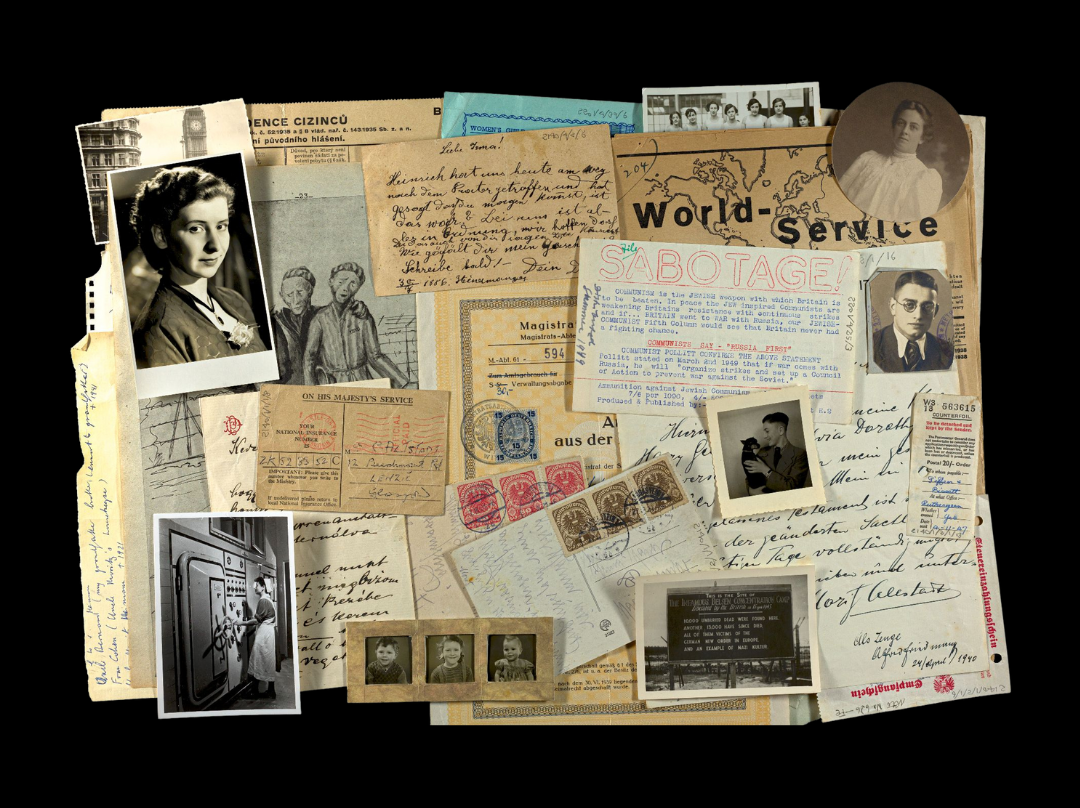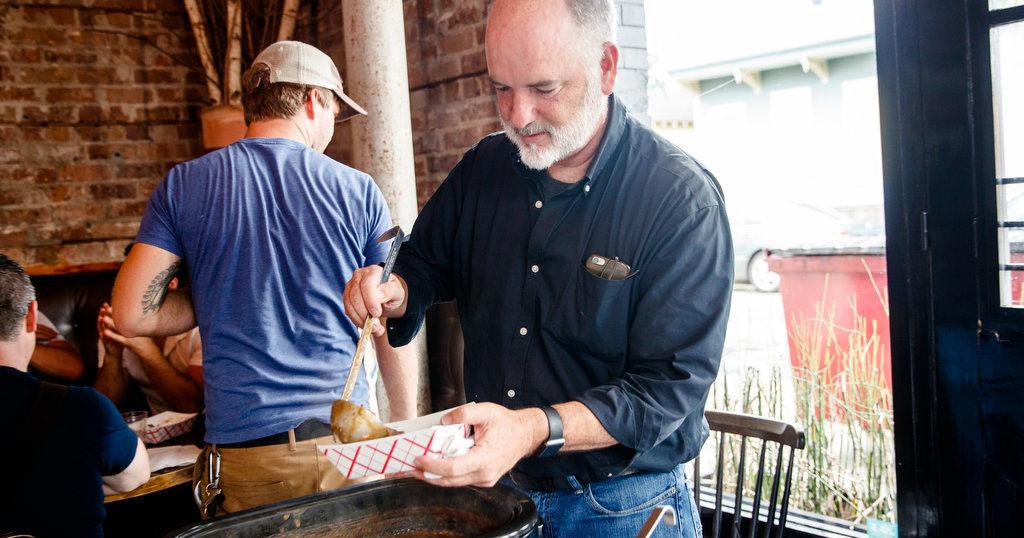I missed this back in October: Venkatesh Rao retired his long-running Ribbonfarm blog. His post is an interesting read, kind of a tour through the era of blogs & social media that Rao believes is now in the rearview.



This site is made possible by member support. 💞
Big thanks to Arcustech for hosting the site and offering amazing tech support.
When you buy through links on kottke.org, I may earn an affiliate commission. Thanks for supporting the site!
kottke.org. home of fine hypertext products since 1998.
The ACLU: Know Your Rights (or, what to do if you are questioned about your immigration status). “You have the right to remain silent and do not have to discuss your immigration or citizenship status with police, immigration agents, or other officials.”
Nirvana Before They Were Nirvana: Watch Their 1988 Performance Recorded in a Radio Shack. “In those days the group went by the name of Ted Ed Fred.”
“Was Anyone Going to Say Anything?”
I don’t know how to say this any louder
THE TRUMP ADMINISTRATION IS MORE RADICAL, MORE FASCIST, MORE VIOLENT THAN ANYONE IN MAINSTREAM POLITICS OR MEDIA IS WILLING TO ADMIT OUT LOUD
THEY ARE FULLY IN THRALL TO A MOVEMENT OF ONLINE NAZIS THAT WANT TO END AMERICA AND KILL MANY, MANY PEOPLE
They do not care about fixing anything. They do not care about running the government. They want to set the Constitution on fire, destroy the federal government, and torture and murder their enemies for fun. This is their only true political commitment
It’s beyond insane - it’s suicidal - that our leaders and our commentators and our media won’t talk about what’s really going on here. They maintain the pretense that this is all about policy differences, but MAGA is barely even bothering with the pretense of a mask anymore
I agree 100% with Stancil here — it is so completely obvious what Trump and the Republicans are trying to do (they are not hiding it!) and it’s maddening to watch the media and Democratic politicians treat this like any other political situation: “that this is all about policy differences”. They are trying to destroy American democracy and amass power for themselves and the oligarchs that support them — that’s what autocracies are for and it’s why Trump and Republicans want one.
We’ve seen this happen with brittle governments all over the world for the past century — it’s not a novel situation — and Republicans have decided that now is the moment to strike our teetering democracy. They convinced voters to roll a wooden horse covered in MAGA stickers inside the city walls and now they are going to hollow it out from within. That’s the game and the sooner everyone wakes up to this truth, the sooner we can try to fix the situation.
Update: Jamelle Bouie: If All This Sounds Delusional, That’s Because It Is.
Put another way, the American system of government is not one in which the people imbue the president with their sovereign authority. He is a servant of the Constitution, bound by its demands. Most presidents in our history have understood this, even as they inevitably pushed for more and greater authority. Not Trump. He sees no distinction between himself and the office, and he sees the office as a grant of unlimited power, or as he once said himself, “I have an Article 2 where I have the right to do whatever I want as president.”
The freeze, then, is Trump’s attempt to make this fanciful claim to limitless power a reality. He wants to usurp the power of the purse for himself. He wants to make the Constitution a grant of absolute and unchecked authority. He wants to remake the government in his image. He wants to be king.
💯 Bouie is one of the few traditional media folks who sees this situation clearly.
Title quote courtesy of Bishop Mariann Budde.
Severance Has a New Opening Title Sequence for Season Two
Season two of Severance is underway and while the first episode didn’t have an opening title sequence, the second episode debuted a new sequence. The season one intro was inducted straight into the Unskippable Intros Hall of Fame and season two’s intro is just as good. Once again, the titles were done by Oliver Latta, who was found by Severance producer Ben Stiller via his Instagram account.
Interesting: Ooni is coming out with a mixer that they say creates “stronger gluten networks” in your bread or pizza dough. “The stronger the gluten network, the more elasticity and extensibility you get in the dough.”
America Wouldn’t Know the Worst of a Vaccine Decline Until It’s Too Late. “Should vaccination rates drop across the board, one of the first diseases to be resurrected would almost certainly be measles.”
Paul Krugman on “recovering my freedom” and why he left the NY Times after 25 years. “In 2024, the editing of my regular columns went from light touch to extremely intrusive.”
Ebooks are now available from Bookshop[dot]org. You can read the ebooks you buy in the browser or with their app, but you can’t read them with an ereader (like the Kindle).
The Louvre’s upcoming renovation & expansion includes a dedicated room for the Mona Lisa. “The Mona Lisa would be accessible separately from the rest of the museum…with its own ticket.” An estimated 80% of visitors come just to see the Mona Lisa.
DC superhero Dreamer, Fortnite’s first out trans character (introduced in 2022), is available in the game’s item shop until Jan 31. Brb, totally buying this right now.
Winners of the 2024 Close-Up Photographer of the Year. “Tadpoles devour the corpse of an adult female toad in Cantabria, Spain.” (Damn nature, you scary!)
Who Were the Nazis?
From January 2017, A.R. Moxon on Nazis:
Historians have a word for Germans who joined the Nazi party, not because they hated Jews, but out of a hope for restored patriotism, or a sense of economic anxiety, or a hope to preserve their religious values, or dislike of their opponents, or raw political opportunism, or convenience, or ignorance, or greed.
That word is “Nazi.” Nobody cares about their motives anymore.
They joined what they joined. They lent their support and their moral approval. And, in so doing, they bound themselves to everything that came after. Who cares any more what particular knot they used in the binding?
A 10-hour ambient cover of Hans Zimmer’s Interstellar soundtrack, perfect for relaxing, focus, studying, or drifting off to sleep.
Benedict Cumberbatch Reads a Letter to a Man Blow-Drying His Balls at the Gym
I don’t know about you, but my brain is short-circuiting a bit from the news today, so I was glad to run across this video of Benedict Cumberbatch reading Ross Beeley’s letter published by McSweeney’s in 2011 called An Open Letter to the Gentleman Blow-Drying His Balls in the Gym Locker Room.
You’re actually doing it. I mean, we’ve all dreamed of blow-drying our balls out in the open, but you’re actually doing it in front of me and at least sixteen other people who just finished exercising at this pricey sports club. Some of us will do it in private in our homes, or in a hotel room using a hairdryer a stranger might have just used to style their hair for that big business meeting in Denver. But not you. You are not confined to such social norms, norms that usually keep flapping, flag-like balls out of my eyes.
(via open culture)
Now Streaming: Seven Samurai’s 4K Restoration
Back in June, I posted about the 4K restoration of Akira Kurosawa’s Seven Samurai coming out in theaters; here’s the trailer:
I just checked and the 4K version appears to be out on streaming and 4K Blu-ray. The 4K Blu-ray is available from the Criterion Collection and includes a bunch of extra goodies: two audio commentaries, a making-of documentary, “a two-hour conversation between director Akira Kurosawa and filmmaker Nagisa Oshima”, and a documentary looking at the samurai traditions and films that helped shape Kurosawa’s masterpiece.
As for streaming, here’s the situation:
- There’s a version on Max that might or might not be the recently restored 4K version. I’ve played the beginning and the titles are nice & crisp and there’s no dust & scratches. But the description doesn’t say anything about 4K and you need to subscribe to their top-tier service to get 4K streaming anyway, so who knows. It might just be a 1080p restoration — which still looks really good, to be clear. (Note: Max’s support team confirms that their version isn’t 4K. Boo. Thx @nabil-boutaleb.bsky.social.)
- Apple TV appears to have Criterion’s 4K restoration — the listing shows the “4K” icon and Criterion links directly to it from their page. And the trailer is for the 4K restoration.
- Amazon may also have the 4K version, but there’s no “4K” icon on their listing. But Criterion does link directly to it from their page.
Streaming services should be better about telling viewers exactly what they are getting. I know most people don’t care and the streamers just want to push content to eyeballs, but this is Seven Samurai we’re talking about here!
Anyway, if there are any big film/streaming nerds out there who can help me sort this out, let me know! I’d love to be as accurate as possible even if Max & Amazon don’t care. (Tbh, this kinda makes me want to buy a 4K Blu-ray player and go back to physical media…)
Reupping this Jamelle Bouie piece from Dec: Now Is Not the Time for Surrender. He’s talking about Democratic politicians and they still are not doing much to oppose Trump. This is driving me *nuts*. Fight, you assholes!
The planned new spinoff of the CBS series “FBI” will focus on CIA agents and is currently titled “FBI: CIA”. 😂 Not even The Simpsons at its peak could have come up with something this nonsensical.
The full trailer for season three of The White Lotus. “You will leave an entirely different person.”
Denis Villeneuve’s Criterion Closet Picks
Director Denis Villeneuve steps into the Criterion Closet to choose and talk about a few of his favorite films, including Krzysztof Kieślowski’s Three Colors trilogy, Steven Soderbergh’s Che, and Seven Samurai. At one point, he says, “We all look like Smurfs next to Fellini.”
“NBA greats think this D-II coach is a basketball genius. So why don’t you know who he is?” I love reading about stuff like this.
I spent too long playing Neal Agarwal’s Simulation Clicker. “Stimulation Clicker takes players on the all-too-familiar journey from ‘this is neat’ to ‘this is ruining my life.’”
ElevationLab is selling a waterproof AirTag case that provides 10-years of battery life. “Easy assembly: Discard AirTag’s battery and door, place on the custom contact, install AA batteries, screw shut.”
TabBoo is a browser extension that adds “random jumpscares to sites you’re trying to avoid”.
The New Yorker is 100 years old this year and part of the celebrations include an exhibition at the NYPL that showcases “founding documents, rare manuscripts, photographs, and timeless cover and cartoon art” from the magazine.
What on Earth Is Jogging? (1971)
In June 1971, the BBC aired a segment on a “mysterious” and “niche” sports imported from America called “jogging”. It’s in black & white, which makes it feel even older than it is, and they interview (while jogging!) Tory MP Ernest Marples, who says he often jogs to Parliament from his house in a lounge suit. This is something straight out of Monty Python…more interviews with people while they are running please.
BTW, Wikipedia has this to say about Marples:
In later life, Marples was elevated to the peerage before fleeing to Monaco at very short notice to avoid prosecution for tax fraud.
Once a runner, always a runner. (thx, dunstan)
A history of computer screensavers, from dumb terminal screen dimming in the 70s to flying toasters and beyond.
From Teen Vogue: How Trans Kids Can Protect Themselves Now That Trump Is in Office. “Despite what can seem like a deluge of anti-trans bills, policies, and language, there are a lot of people on your side, fighting for trans rights.”
“The Wiener Holocaust Library, one of the largest Nazi-era archives in the world, has launched a new online portal putting over 150,000 pages of evidence of the Holocaust and those who resisted it at the hands of researchers worldwide.”
Today is International Holocaust Remembrance Day
80 years ago today, the Nazi death camp at Auschwitz-Birkenau was liberated. An estimated 1.1 million people (Jews, Poles, Russian POWs, Roma) were murdered at Auschwitz-Birkenau between 1940 and 1945, and this date was subsequently chosen by the United Nations as International Holocaust Remembrance Day.
One of the things you can do to mark the day is to join Yad Vashem’s IRemember Wall:
The IRemember Wall is a unique and meaningful opportunity for you to participate in an online commemorative activity marking International Holocaust Remembrance Day.
By joining our IRemember Wall, your name will be randomly matched to the name of a Holocaust victim from our Central Database of Shoah Victims’ Names, and will appear together on the Wall.
You can also choose a specific name to remember and match with on the Wall from our Central Database of Shoah Victims’ Names, which contains over 4.8 million names of Holocaust victims.
As he does every year, illustrator Christoph Niemann drew the person he matched with and shared the story of her life.

This year I was paired with Astro Cofino. We have very little biographical information: she was born in 1930 in Athens, her parents were called Benoua and Mairy. The first thing that caught my eye when I saw Astro’s photo was a little brooch she’s wearing: it looks like a comet, and I can’t help but thinking that it was meant as a reference to her name? Astro is maybe 11 or 12 in the picture, she smiles, with a tiny hint of giddiness in her eyes.
Here’s Astro’s information from Yad Vashem’s database — she was murdered by the Nazis at Auschwitz when she was 14.
“The Homosaurus is an international linked data vocabulary of Lesbian, Gay, Bisexual, Transgender, and Queer (LGBTQ) terms.”
Questlove’s Fantastic Video Mix of 50 Years of SNL Music
Oh this is just delightful: for the opening of his documentary film on the history of music on SNL he co-directed with Oz Rodriguez, Questlove produced what the NY Times calls “a high-speed, six-minute DJ mix of SNL music highlights”. So. Good.
From the same piece in the Times, Questlove explains how it came about:
It’s impossible for me to phone anything in, even if I wanted to. I just wanted to throw the ultimate D.J. gig and hook you in from the gate. It started off small, and it couldn’t stop.
In the beginning, I was just going in five-year intervals — what’s the three strongest moments between ‘75 and ‘80? — and do it that way. But I’m so programmed as a D.J. it’s physically impossible for me to gather a group of songs together and not start — that’s my version of improvisation. And once you put, like, 17 songs together, you have a conversation with yourself: “OK, are we really doing this?”
My producers said: “It’ll never happen! The clearance, the clearance!” This is the first time that I realized my diplomatic position in music. People say, “Ahmir, you might be the next Quincy Jones, because your whole thing is more social than creative, knowing the right people, knowing who’s who.” There were at least 19 situations in which I had to come hat in hand to said person, and mind you, this is for two seconds — Michael Bolton singing “Love Is a Wonderful Thing” just once.
He got every clearance except for Luciano Pavarotti:
The only outright no that I couldn’t fix was that Luciano Pavarotti was going to be part of the Bobby McFerrin-Busta Rhymes mash-up. But it was too much to explain to his estate, and I couldn’t go to Italy and whatever. It could have been brilliant, Bobby McFerrin and Pavarotti going toe to toe.
The film premieres tonight on NBC and will be available on Peacock starting tomorrow.
Update: According to Questlove’s Instagram post, the musical montage was edited by John MacDonald, Coordinating Producer of The Tonight Show. (via @solace.bsky.social)
Update: The YouTube video is now barely watchable — 2/3s of the screen is blurred. You’ll have to watch the film on Peacock to get the full experience.
The Source of the Irish Potato Famine Pathogen Is Finally Identified. “Researchers nailed down the Andes Mountains in South America as the birthplace of Phtytophthora infestans, otherwise known as potato blight or late blight.”
Oh man, very sad news: Pableaux Johnson has died. If you were at SXSW in the late 90s or early 00s, you probably ran into Pableaux, probably at a big dinner he threw, probably him handing you, a stranger just minutes before, a plate of food. Fuck.
How to Weather the Storm
Without really meaning to, this week I’ve posted a few related articles around the theme of how to survive the next four years of the new oligarchical, authoritarian regime here in the US. I thought it would be helpful to compile them into one post, with excerpts that are particularly relevant or resonant.
Mishell Baker, who is living with “deadly, incurable cancer”, urges us to think about how we spend our time and allocate our energies:
So, there are times when I need to pay attention to the cancer, like, when I have to go to doctor’s appointments, take a medication on time, or make choices regarding self-care to increase my quality of life.
But when I am not doing those things, thinking about the cancer is actively harmful.
There are moments when I feel okay, and my daughter wants to play a video game with me. Or I have the chance to see a cool movie, or the urge to write a story.
I cannot do these things if I am paralyzed with horror and dismay thinking in detail about what’s happening in my body.
Whether there is the chance for a one-day miracle if I live long enough is irrelevant. The point is: I am alive, *today*, and at some point, I will not be. So if in a given moment I can make my or someone else’s life better, that is what I should be doing, rather than obsessing over my illness.
But every minute you focus on that horror when you are *not* actively doing something to evade or improve or ameliorate the situation (receiving chemo, taking Zofran, listening to the doctor, etc.), you are WASTING WHAT’S LEFT OF YOUR WILD PRECIOUS LIFE.
The same goes for all of you. Most of you have more time than I do (and it has taken a lot of work for me not to rage at that, and to feel genuine happiness and hope for you), but none of you have forever.
You have opportunity after opportunity to create something lovely for yourself or others. Every moment you choose to sit and think about horrors beyond your control, every time you make the choice to look for more and more details about just HOW bad… you are turning away from those opportunities.
Mike Monteiro wrote about how to survive being online:
The first four years of Donald Trump was a continuous panic attack. I’m not going through that again. You don’t have to either. They’re on stage, but you don’t have to be their audience.
Am I telling you to bury your head in the sand? Far from it. I am telling you to moderate your exposure to the bullshit. Your retweet or reskeet or repost is not going to save democracy. Your hot take on some idiot’s confirmation hearing is, at most, freaking out your friends. And if you want to remain on social media, as I will be, do your best to separate the signal from the noise. Follow people who are engaged in your community, follow people who are engaged in helping others, follow people who are posting pictures of their new puppy because puppies are awesome, follow artists making cool weird shit, follow people who are creating new stages. Stages where you are welcome. Stages built on love and kindness and inclusion. Stages where the audience can take a turn getting up there as well and tell their story. And yes, follow some trusted news sources, and double check their shit with a second news source.
But the people spreading panic to generate attention for themselves? Be they elected idiots, or oligarchs, or regular folks like me and you — block at will.
Mike and I are both on Bluesky, where there is a culture of blocking attention-seekers instead of dunking on or arguing with them, which I believe has made it a better place to spend time than other current social networks. I hope that culture endures as the site grows.
Critical Ignoring as a Core Competence for Digital Citizens is a paper published by a group of scholars in 2022:
Low-quality and misleading information online can hijack people’s attention, often by evoking curiosity, outrage, or anger. Resisting certain types of information and actors online requires people to adopt new mental habits that help them avoid being tempted by attention-grabbing and potentially harmful content. We argue that digital information literacy must include the competence of critical ignoring — choosing what to ignore and where to invest one’s limited attentional capacities. We review three types of cognitive strategies for implementing critical ignoring: self-nudging, in which one ignores temptations by removing them from one’s digital environments; lateral reading, in which one vets information by leaving the source and verifying its credibility elsewhere online; and the do-not-feed-the-trolls heuristic, which advises one to not reward malicious actors with attention. We argue that these strategies implementing critical ignoring should be part of school curricula on digital information literacy. Teaching the competence of critical ignoring requires a paradigm shift in educators’ thinking, from a sole focus on the power and promise of paying close attention to an additional emphasis on the power of ignoring. Encouraging students and other online users to embrace critical ignoring can empower them to shield themselves from the excesses, traps, and information disorders of today’s attention economy.
And:
In sum, digital environments present new challenges to people’s cognition and attention. People must therefore develop new mental habits, or retool those from other domains, to prevent merchants of low-quality information from hijacking their cognitive resources. One key such competence is the ability to deliberately and strategically ignore information.
Kim Kelly shared some dos and don’ts and resources related to mutual aid, which will become more important over the next few years as our government leans into working against the people it’s supposed to be serving:
To make a crucial distinction, mutual aid is not charity; there is no means testing, no judgement, no quid pro quo or paternalistic notions about “saving” people. It’s about giving what you can to someone who needs it, and knowing that, if the roles were reversed, someone else would step in to help you.
Find the people who are already doing the work, and follow their lead. A common mistake that folks make when they’re newly invested in a cause or movement is feeling as though they need to start up their own brand-new organization in order to really make an impact. Your energy is better spent identifying the people and groups who have already been doing the kind of work you’re interested in, and then finding ways to get involved. Intentionally pooling time, resources, and people-power is far more effective than spreading them thinly and hoping for the best!
Keep showing up. It’s okay if you only have so much time or energy to contribute — we’re all human, and we’ve all got our own struggles — but making a firm commitment to continue participating in a group or an action is how to build up a real, durable network. Mutual aid is not just a disaster response, it’s a way of caring for one another, building stronger communities, and preparing for whatever life may throw at us next. It’s a labor of love — and a way of life.
“Pace yourself” is something I hear all the time from activists…it’s a marathon, not a sprint.
From my post on Laozi’s Dao De Jing:
The soft and yielding overcome the strong and powerful.
And some wisdom from The Wire’s Avon Barksdale about weathering long, hard times:
This ain’t no thing, man, you know what I mean? You come in here, man, and get your mind right — get in here and you do two days: that’s the day you come in this motherfucker and the day you get out this motherfucker.
I read Robin Wall Kimmerer’s The Serviceberry on my vacation and I wish I could share a few relevant passages from it, but in keeping with the theme of the book, I left it at my hotel’s communal library for someone else to read.
I don’t know where this fits, but I found this heartening from Alexandria Ocasio-Cortez (more of this energy from our elected officials please):
One thing about me is that I will fight Nazis until I’m six feet in the ground.
And finally, something I ran across this morning, from Rusty Foster at Today in Tabs:
Instead I just want to encourage you to join something. Please don’t feel like it has to be a political organization, unless you absolutely love Roberts’ Rules of Order. Find a group of people doing something you like, and join them. Join a bowling league. Find a book group. Join a church, or a mosque, or a synagogue, if that’s the way your heart leans. If the first thing you try doesn’t bring you joy, try something else.
It took me a lot longer than it should have but eventually I realized that I don’t need to feel guilty about not sticking with the DSA. And I realized that search and rescue isn’t frivolous, and it wouldn’t be even if it was a disc golf team, or a neighborhood dinner swap, or a knitting circle, or a biking group. This isn’t a marathon, this is the rest of my life, and what gets me through it isn’t eternal helpless vigilance or angry posting. It’s forming connections with other people around activities that bring me joy. It’s building trust, so that when some goose-stepping fuck tries to make me afraid of my neighbors, I can laugh at him.
See also How to Be Productive in Terrible Times.
I’ve decided that part of what I’m doing to weather the storm is to keep doing what I’m doing here on kottke.org — that is, highlighting the creativity of humanity, telling the truth about what’s going on in the world, sharing dumb stuff that makes us laugh — and continue to develop an online community built around those things via the comments and other means. It feels good and purposeful to me to do this work and to support this fledgling community — you could say that I find it engaging.
Anyway, I hope you have a good weekend and I’ll see you back here on Monday.
This post by Matt Webb on “a bunch of stuff that happened” works best when you imagine the last three lines being read by Ricky Jay (a la in Magnolia).
“Live, laugh, tape fish on ATMs.” Last year, a Utah teen was arrested for taping fish to ATMs and posting pictures of the fishy ATMs to an Instagram account.
From Antiques Roadshow in 1990, a look at a rare first edition copy of The Hobbit. It’s got a dust jacket and is accompanied by a personal letter from J.R.R. Tolkien himself.
Global economy could face 50% loss in GDP between 2070 and 2090 from climate shocks, say actuaries. They say conventional predictions ignore “tipping points, sea temperature rises, migration and conflict as a result of global heating”.
A real-time map of passenger trains in the US and Canada. Good for marveling at the teensy, embarrassing number of trains operating in the US.
Comets Are Cool

From astronomer Yuri Beletsky, a photo of Comet C/2024 G3 (ATLAS) arching over ESO’s Paranal Observatory in Chile.
Unfortunately, it seems like the comet disintegrated as it swooped around the Sun, always a danger.
The nucleus of Comet ATLAS (C/2024 G3) held together during a brutal perihelion but not for long. Lionel Majzik of Hungary was the first to report and record dramatic changes in the comet between January 18th and 19th. The bright, strongly condensed head rapidly became more diffuse, a sure sign that its nucleus was disintegrating based on past observations of crumbling comets. His superb sequence, photographed remotely from Chile, clearly reveal the dramatic transformation, which was later confirmed by Australian observers.
The tail will be visible for a few days after the breakup — such comets are called “headless wonders” by astronomers. (via @philplait.bsky.social)
An interview with Questlove on his upcoming documentary on the history of music on SNL. “I will never forget seeing Devo as a 7-year-old — laughing like: ‘Are these aliens? What the hell is this?’” The film starts with a 6-min DJ mix by Questlove.
Supercut of Movie Scenes That Break the Fourth Wall
Leigh Singer gathered more than 50 clips from movies that break the fourth wall (where the characters acknowledge they’re in a movie).
Sadly my favorite broken fourth wall moment didn’t make the list: Billy Ray Valentine in Trading Places getting a commodities lesson from the Dukes. (via zupped)
Update: Ah, and all is right with the universe again as Trading Places makes it into Singer’s second compilation of fourth wall breaks.
Wikenigma is an encyclopedia of known unknowns. That is, a listing of “scientific and academic questions to which no-one, anywhere, has yet been able to provide a definitive answer”.
Quietly marveling at the diverse array of ceramic work on view this month at an art fair in Brussels dedicated to the medium.
How Daft Punk Made The Drums For “Starboy” By The Weeknd. They used a pocket-sized synthesizer from Teenage Engineering.
Rick Steves, Always on the Go
I really enjoyed this interview with traveller and writer Rick Steves by Lulu Garcia-Navarro, which is also available as a YouTube video and podcast episode (Apple, Spotify). Here are some particularly appealing excerpts:
I love to be on a bus that’s so crowded that there’s people hanging outside the door when the bus takes off and then they settle in like cornflakes settle into a box, and there’s always room for one more body.
If you’ve never been on a bus or train like this, have you even travelled?
I just love to expose people to examples of things they would never encounter at home. Culture shock is a constructive thing. It’s the growing pains of a broadening perspective. To me, there are two kinds of travel: There’s escape travel, and there’s reality travel. I want to go home a little bit different, a little less afraid, a little more thankful, a little better citizen of the planet.
I love escape travel (my recent trip was 90% escape) but the trips I really value are the ones that change me.
Media consumption modes could also probably be sorted into escape and reality. I’ve watched/read a lot of escape/comfort/easy media over the past year and am trying to ease myself back into stuff that’s a little more challenging.
Thomas Jefferson wrote, Travel makes a person wiser if less happy. I’ve always had this hunger to be more engaged. Not necessarily more happy, but more engaged.
As someone who is often puzzled by how to answer the “are you happy?” question, I appreciate this perspective. Happiness is generally not my goal, something closer to engagement is.
Lulu, I’m in this sort of thing in my teaching where I remind people there’s three kinds of travel: You can travel as a tourist, a traveler or a pilgrim.
Ok Steve, is it two kinds of travel or three? 😉 Here’s his explanation of the three types:
Most travelers I know, they’re proud to be known as a traveler as opposed to a tourist: “I’m more thoughtful — I’m not just here to shop and get a selfie. I’m here to immerse myself in the culture and learn.” That is a traveler, to become a temporary local. A traveler learns about the world, but I think a pilgrim learns about themselves, and you learn about yourself by leaving your home and looking at it from a distance. You learn about yourself, I think, by trying to get close to God in your travels
Yeah, the pilgrim thing definitely resonates with me — “transformational travel” he calls it a paragraph later.
The most frightened people are the people who have never traveled, whose worldview is shaped by commercial news media. And the people that are not afraid are the people who have been out there and met the enemy. My most powerful travel experiences have been going places where I’m not supposed to go: Cuba, Palestine, Iran. The friendliest people, the most curious people, the people that need to meet me and I need to meet them. When they meet me, it’s tougher for their propaganda to demonize me, and when I meet them, it’s harder for my country’s propaganda to dehumanize them. It’s a powerful thing.
Tomorrow, Jan 24th: a special 24-hour livestream of the “groundbreaking” generative documentary film Eno (about Brian Eno). The film is different each time it’s shown; they’ll be presenting 6 different versions over the 24 hours.
The Evolution of Bugs Bunny Over 80 Years
In his ongoing series Cartoon Evolution, Dave Lee looks at how the character of Bugs Bunny has changed and evolved since his debut in 1938 as an unnamed rabbit in Porky’s Hare Hunt. It didn’t take long for the character to find its stride. From Wikipedia:
While Porky’s Hare Hunt was the first Warner Bros. cartoon to feature what would become Bugs Bunny, A Wild Hare, directed by Tex Avery and released on July 27, 1940, is widely considered to be the first official Bugs Bunny cartoon. It is the first film where both Elmer Fudd and Bugs, both redesigned by Bob Givens, are shown in their fully developed forms as hunter and tormentor, respectively; the first in which Mel Blanc uses what became Bugs’ standard voice; and the first in which Bugs uses his catchphrase, “What’s up, Doc?” A Wild Hare was a huge success in theaters and received an Academy Award nomination for Best Cartoon Short Subject.
You can explore more of Lee’s Cartoon Evolutions, including The Simpsons, Donald Duck, Winnie the Pooh, Super Mario (not strictly a cartoon), and James Bond (not at all a cartoon).
A calque is a word that has been loaned *and translated* from another language. Some English calques: flea market, potsticker, beer garden, iceberg, refried beans, superman, scapegoat, stormtrooper, killer whale.
































Stay Connected